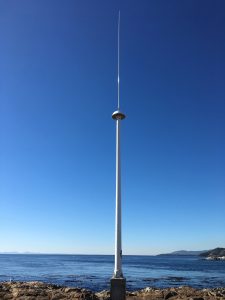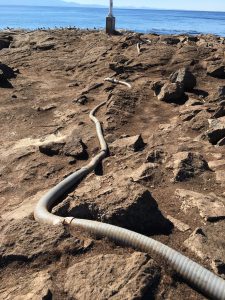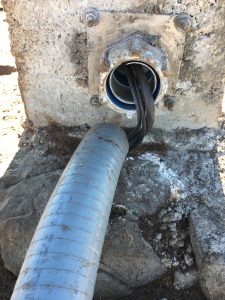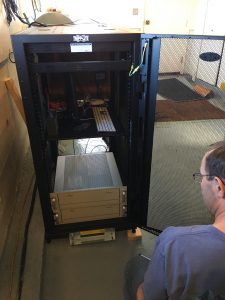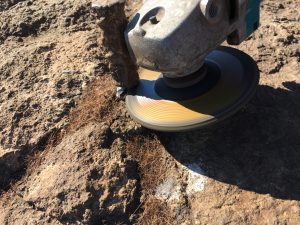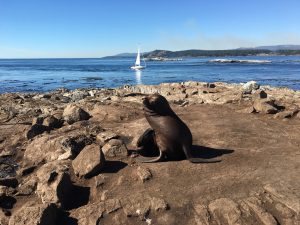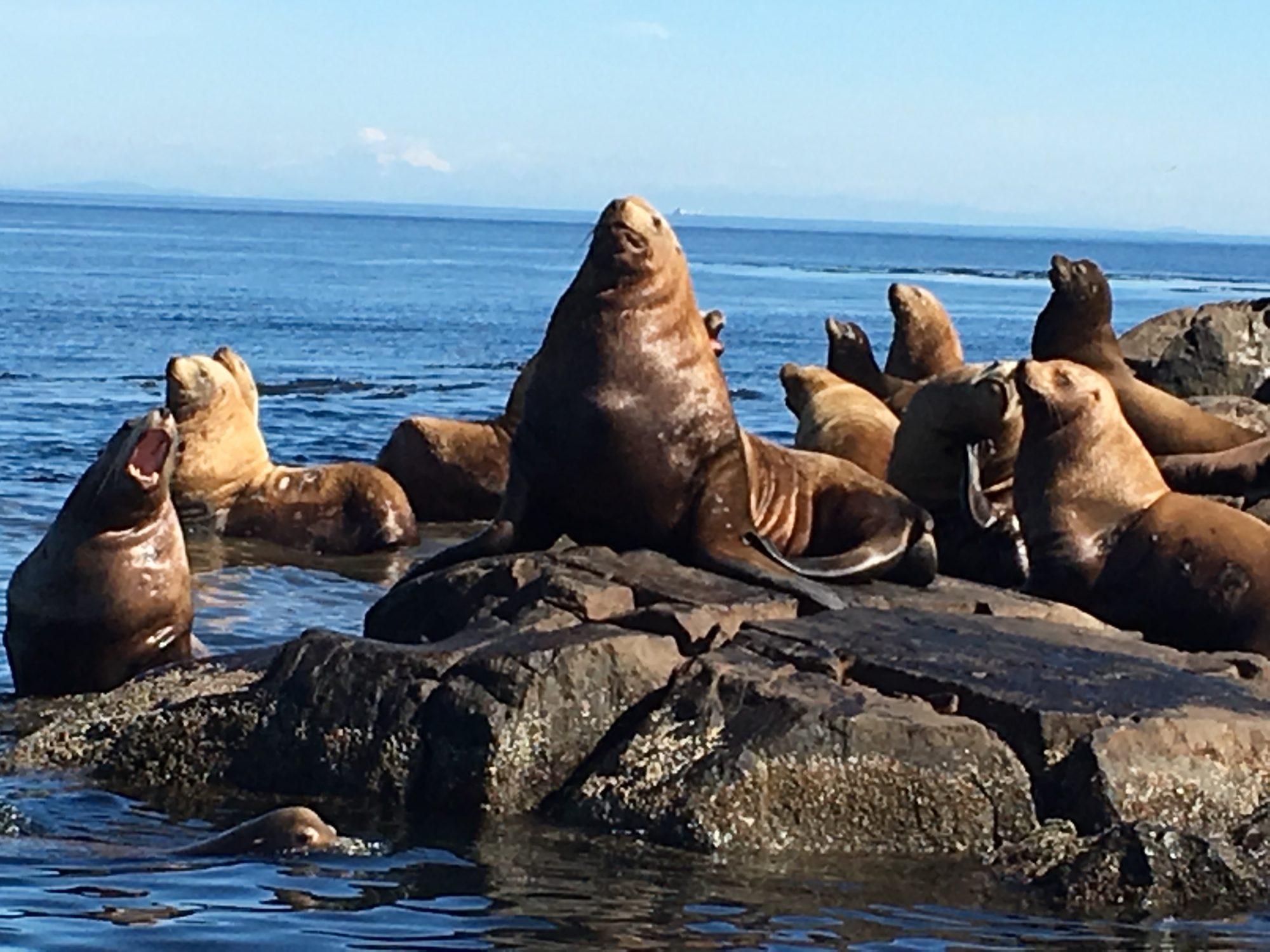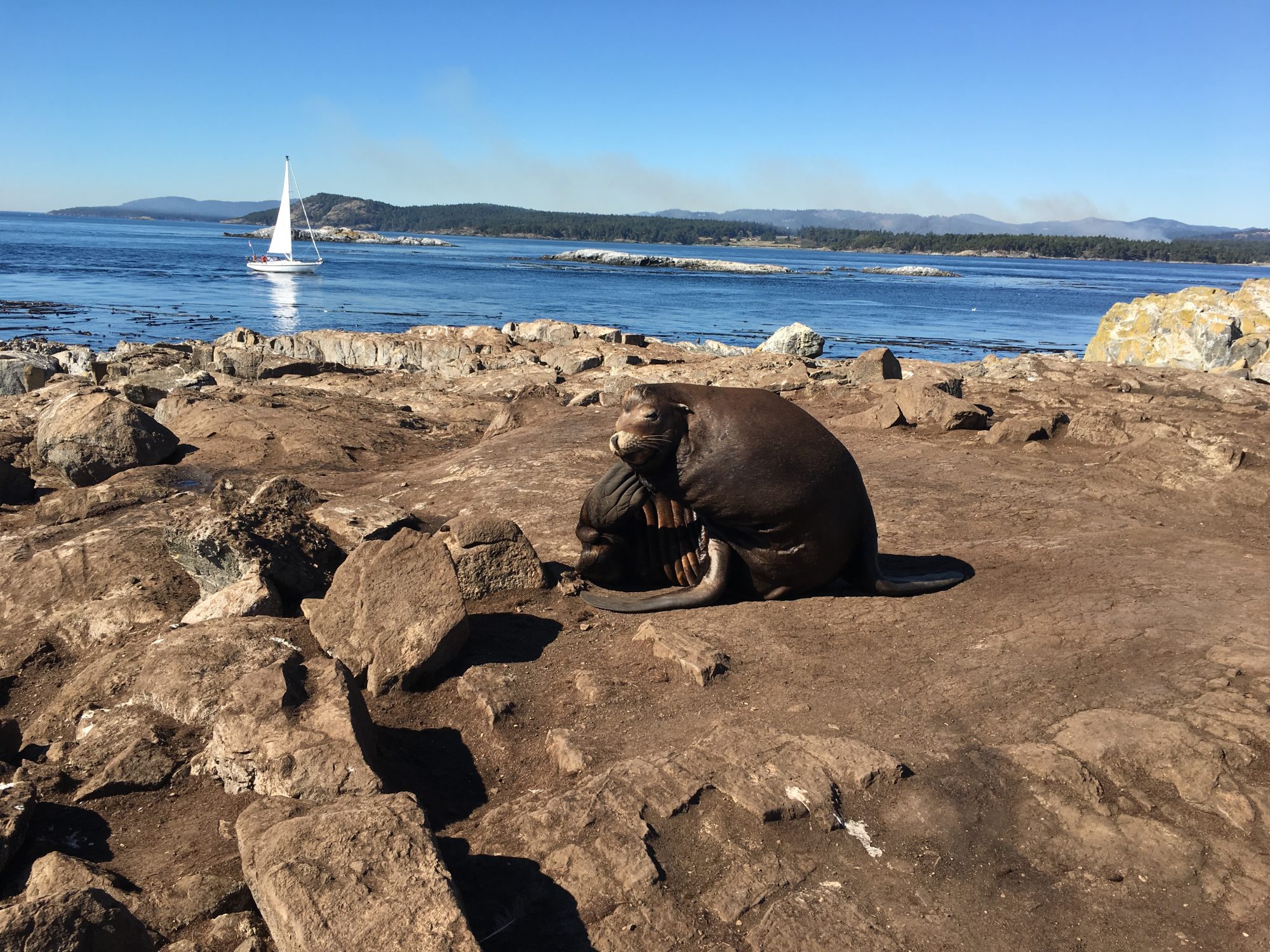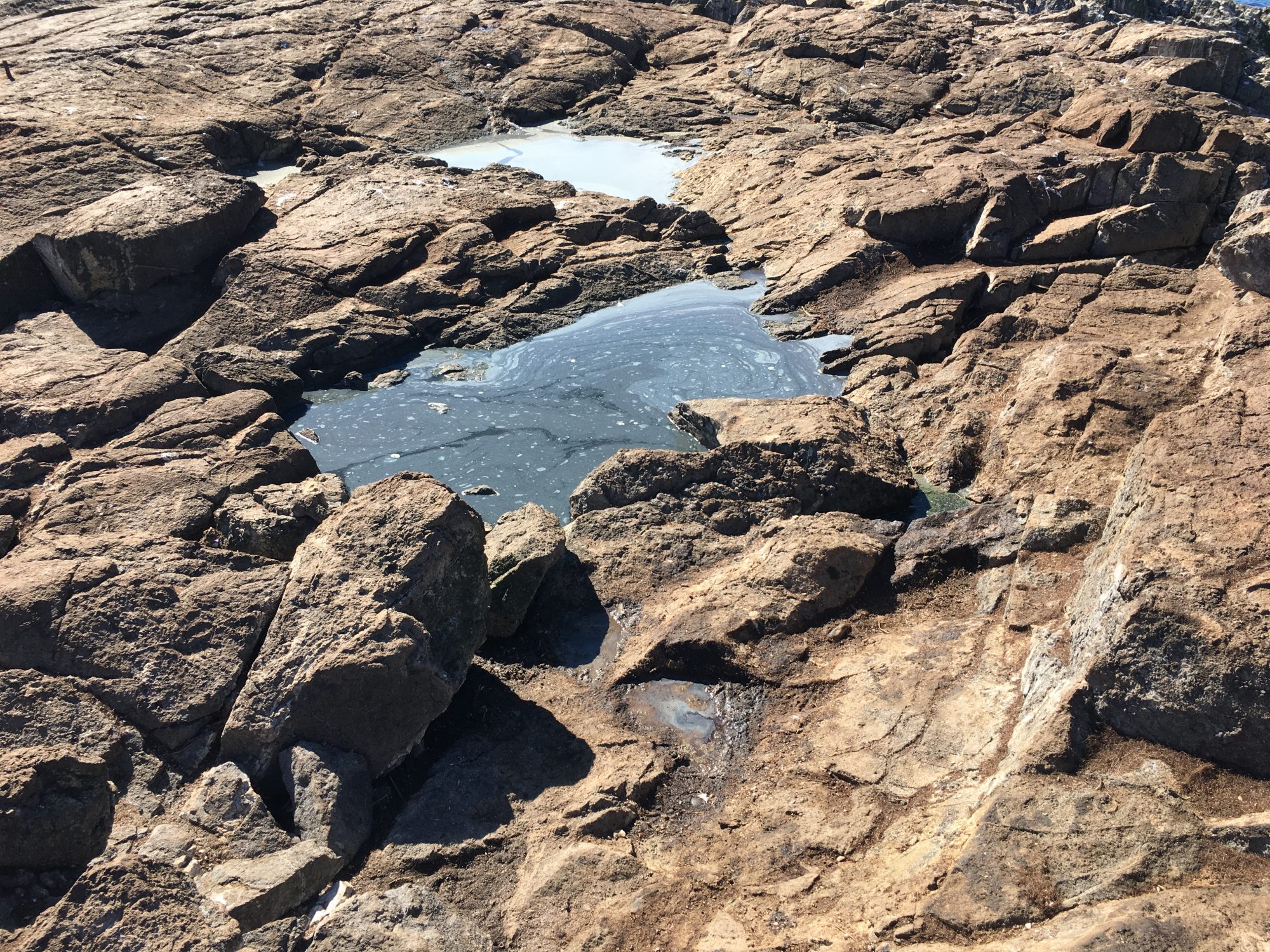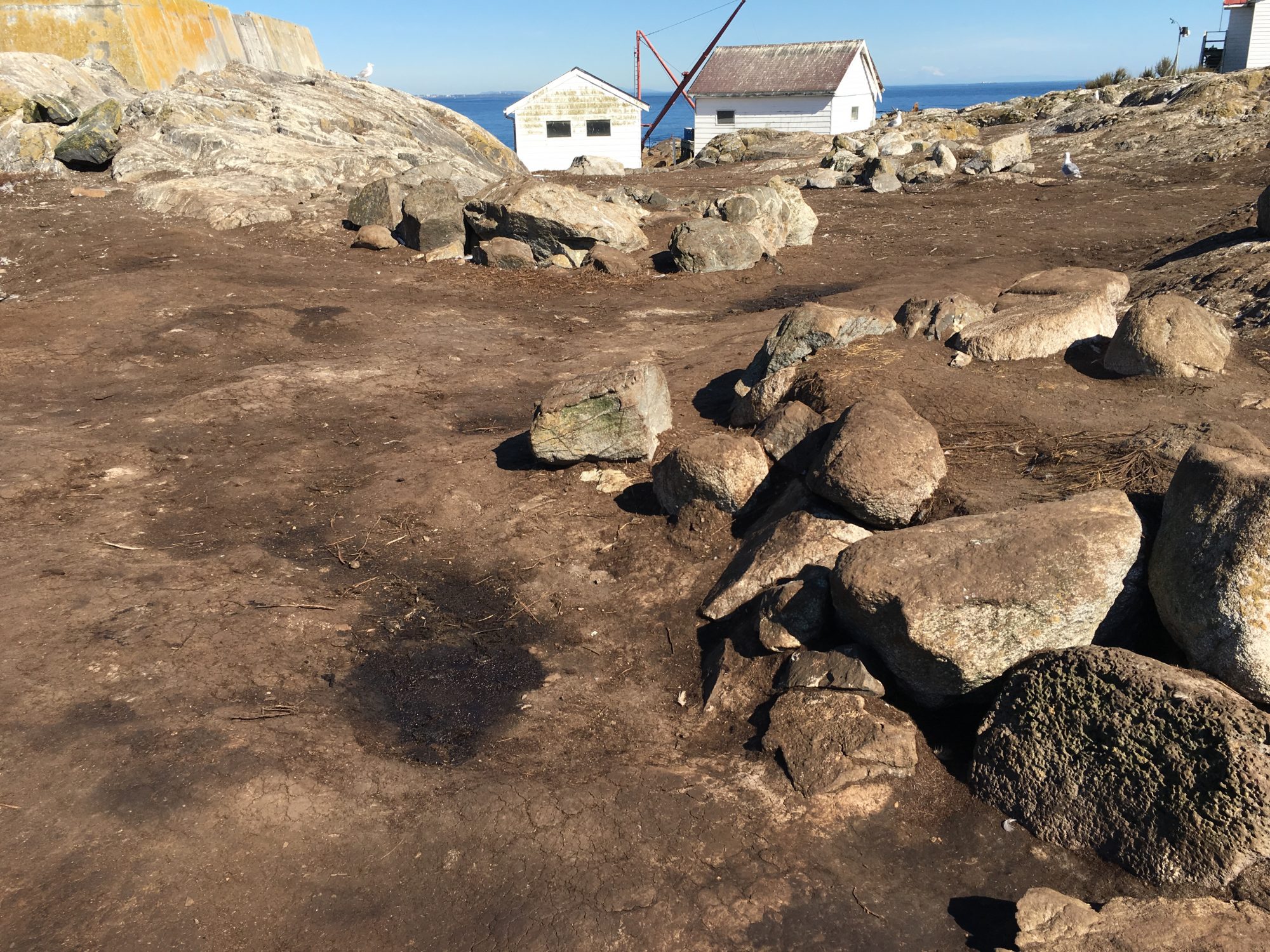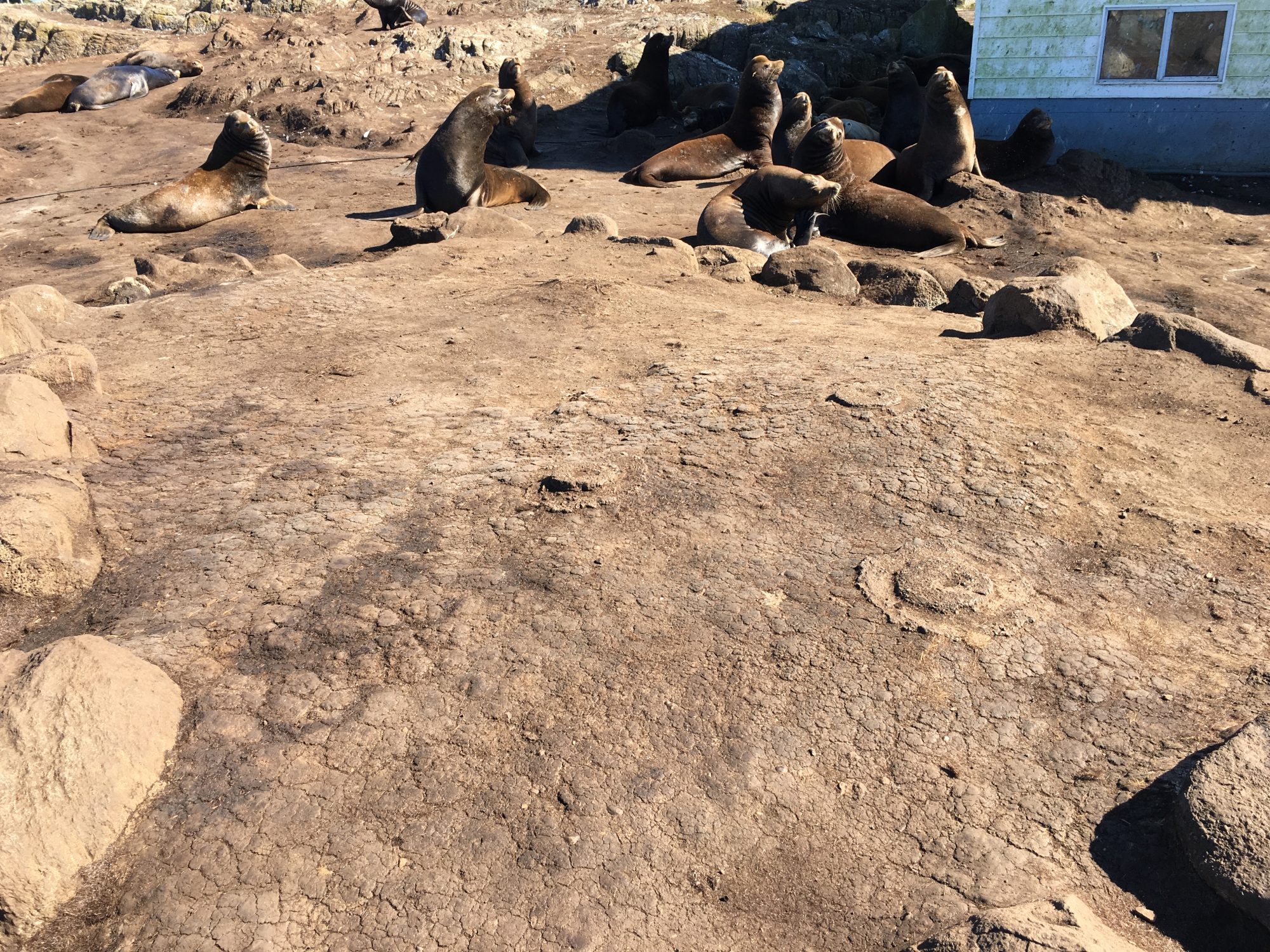Juan de Fuca _CODAR_backgrounder
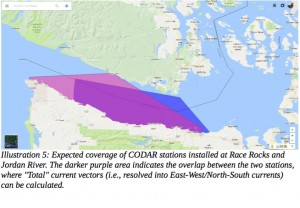 Today Guy drove me out to Race Rocks with Kevin Bartlett, Marine Equipment, Specialist with Ocean Networks Canada. They had installed equipment earlier in the year but had ro change the frequency of broadcasting before it is operational. Kevin was making repairs, one being fixing the conduit at the base of the tower which had been disturbed by sealions. When this equipment is fully operational it will give acurate current vectors for the eastern entrance of the Strait of Juan de Fuca.
Today Guy drove me out to Race Rocks with Kevin Bartlett, Marine Equipment, Specialist with Ocean Networks Canada. They had installed equipment earlier in the year but had ro change the frequency of broadcasting before it is operational. Kevin was making repairs, one being fixing the conduit at the base of the tower which had been disturbed by sealions. When this equipment is fully operational it will give acurate current vectors for the eastern entrance of the Strait of Juan de Fuca.
- CODAR antenna
- Conduit with cables from Antenna to transmitters
- Sea lions had snapped off this conduit at ther base of thew antenna. We reattached and built up rocks around it to prevent reoccurrence
- Transmitter and receiver in Science house basement
- I removed this iron peg which could be a hazard where the sea lions haul out and learned the hard way about gyroscopic precession a disc grinder ..ooops
- California sea lion in the area.
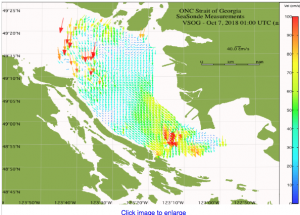 Sample from a similar station now in operation:
Sample from a similar station now in operation:
It was has been noticeable this year that instead of hauling out on the neighbouring islets of the Race Rocks Archipelago, the sealions are hauled out entirely on the main island of Great Race Rock. They have heavily impacted the vegetated areas .
- Northern ( steller) sea lion, also a branded one in this photo, haul out near the docks and on the isthmus under the light tower
- California Sea lions have occupied much of the main Island.
- Upper tidepools of the southwest knoll have been heavily impacted by sealion excrement
- Some damage by sealions to the aboriginal burial cairns
- Main burial cairn eroded on top where the three concrete anchors were found a few years ago

